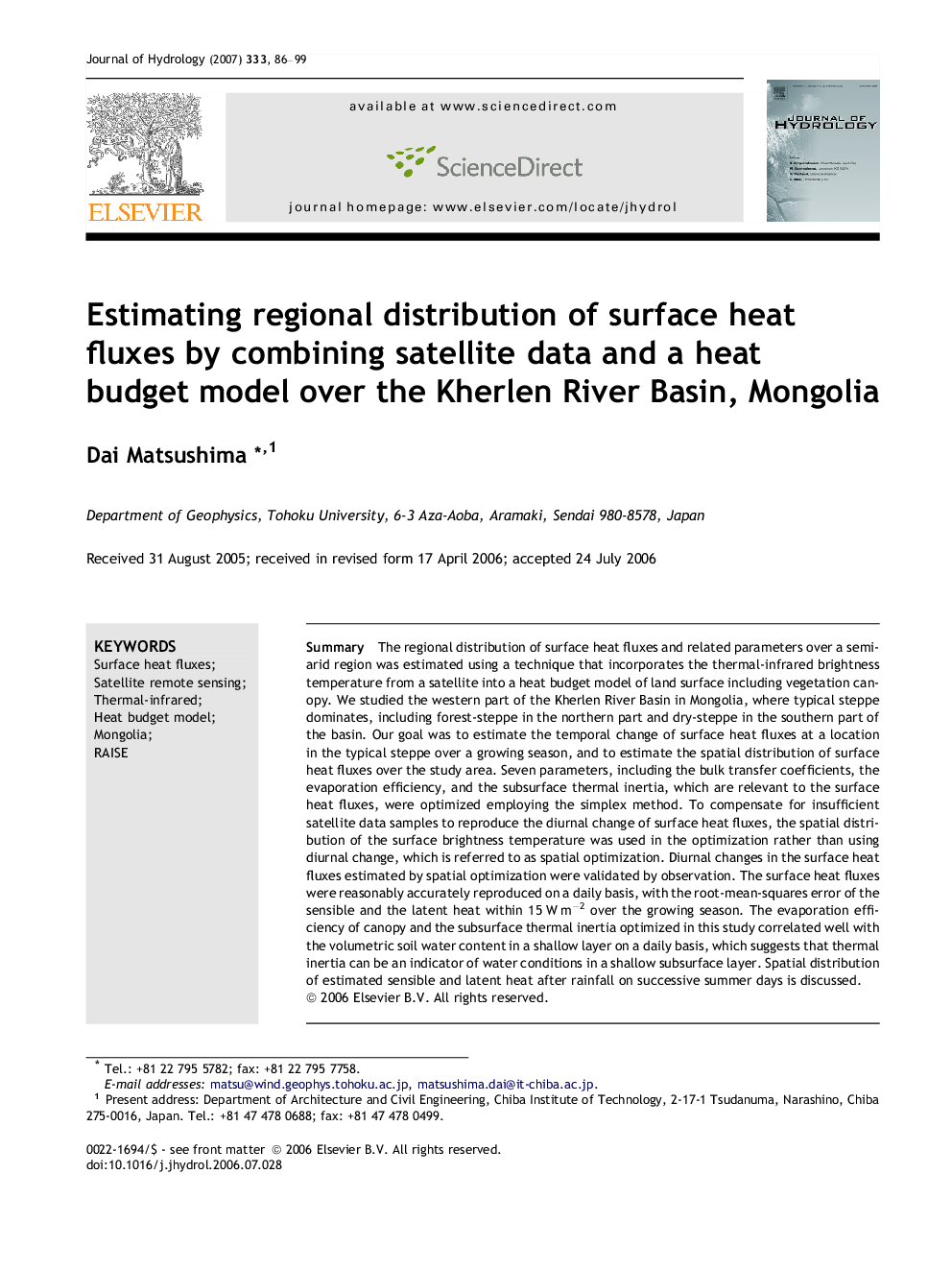| کد مقاله | کد نشریه | سال انتشار | مقاله انگلیسی | نسخه تمام متن |
|---|---|---|---|---|
| 4580152 | 1333122 | 2007 | 14 صفحه PDF | دانلود رایگان |

SummaryThe regional distribution of surface heat fluxes and related parameters over a semi-arid region was estimated using a technique that incorporates the thermal-infrared brightness temperature from a satellite into a heat budget model of land surface including vegetation canopy. We studied the western part of the Kherlen River Basin in Mongolia, where typical steppe dominates, including forest-steppe in the northern part and dry-steppe in the southern part of the basin. Our goal was to estimate the temporal change of surface heat fluxes at a location in the typical steppe over a growing season, and to estimate the spatial distribution of surface heat fluxes over the study area. Seven parameters, including the bulk transfer coefficients, the evaporation efficiency, and the subsurface thermal inertia, which are relevant to the surface heat fluxes, were optimized employing the simplex method. To compensate for insufficient satellite data samples to reproduce the diurnal change of surface heat fluxes, the spatial distribution of the surface brightness temperature was used in the optimization rather than using diurnal change, which is referred to as spatial optimization. Diurnal changes in the surface heat fluxes estimated by spatial optimization were validated by observation. The surface heat fluxes were reasonably accurately reproduced on a daily basis, with the root-mean-squares error of the sensible and the latent heat within 15 W m−2 over the growing season. The evaporation efficiency of canopy and the subsurface thermal inertia optimized in this study correlated well with the volumetric soil water content in a shallow layer on a daily basis, which suggests that thermal inertia can be an indicator of water conditions in a shallow subsurface layer. Spatial distribution of estimated sensible and latent heat after rainfall on successive summer days is discussed.
Journal: Journal of Hydrology - Volume 333, Issue 1, 30 January 2007, Pages 86–99